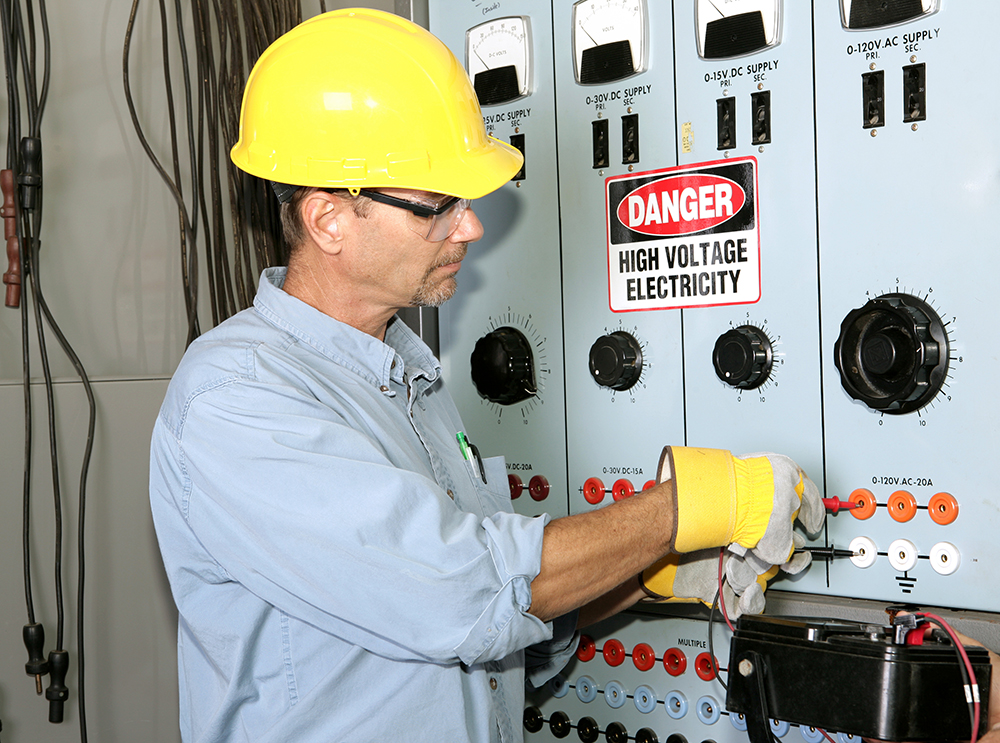With a permanently mounted live line indicator, the end-users are instantly warned that a particular part of their high voltage installation is energized and under power. The fixed mounted high voltage indicators are protective safety devices that will indicate the status of the electrical distribution system to the worker, maintenance personnel or inspectors. When approaching an electrical installation, either in an open area with indoor protection or in an indoor/outdoor switchgear apparatus, the most effective and inexpensive method is to provide the electrical installation with a permanently mounted single pole voltage indicator.
These voltage indicators also called live line indicators can be viewed at a safe distance in open areas and/or through viewing windows installed within the switchgear assembly. The indicators are permanently installed by the switchgear manufacturer upon specification and in the desired locations throughout the assembly, as requested by the owners. The most practical place to install them would be at the incoming voltage supply lines or at the outgoing side of a load break switch with or without fuses or in similar arrangements where the indication of the system status would be desired. As an example, the voltage indicator will indicate which fuse is blown or defective in a three-phase system, when installed at the outgoing end of a fuse assembly.
The advantage of having such single pole voltage indicators mounted within the switchgear assembly is to give the end-user a quick and instant warning about the status of the electrical installation without having to open locked doors and to be exposed to electrical hazards. This efficient method can be achieved by viewing the voltage indicators from the outside of the switchgear assembly through a reinforced glass window. Also, there is no need for special tooling or measuring devices to search or test for blown fuses.
The permanently mounted live line indicators will indicate when a conductor or circuit is energized. The presence of voltage will cause a recessed cluster of three LEDs to flash in sequence. At a lower voltage range the flashing sequence is slower as in a given higher voltage range. The live line indicators do not require any settings or adjustments. They are dielectrically insulated and will not generate any flashover during a hi-pot or corona discharge test.
These voltage indicators are rated and factory set from 2 kV to 46 kV and another type from 69 kV to 138 kV. They are designed for bolt and nut connection with a flexible cable lead that will maintain its position in any chosen bending angle for perfect visibility of the flashing LEDs. Another connecting method can be with a stud type connection. In both cases, the indicators must make direct contact with a bare electrical surface or connecting point.
Life expectancy is in excess of ten years. The history of voltage indicators can be traced back to fifteen years of dependable performances. They are of extra light design with a physical size of only 1.5 x 5.5 inches for the flexible cable type and 2″ x 2″ for the stud mounted type.
Such protective safety indicators are very effective for the protection and warnings given out to the workers; however, it is always a good working practice (and sometimes the law) to verify the presence or absence of voltages within the electrical system by means of a second verification method.
This second verification method is performed with the use of a portable voltage detector prior to applying the grounding procedures to the system. It is recommended that only specialized and knowledgeable maintenance personnel with proper qualifications perform such functions. The voltage detector will verify again the status of the electrical system. A typical voltage detector is comprised of an insulating stick with a voltage detecting unit that will give an acoustic and/or optical signal when there is a presence of voltage at the point of testing. The detector must make direct contact with the uninsulated part of the electrical system to be tested for presence or absence of voltages.
This article is reflecting on general common-sense without any intent to impose on local or national working rules and regulations, safety in the workplace or the qualifications of workers.













Find Us on Socials